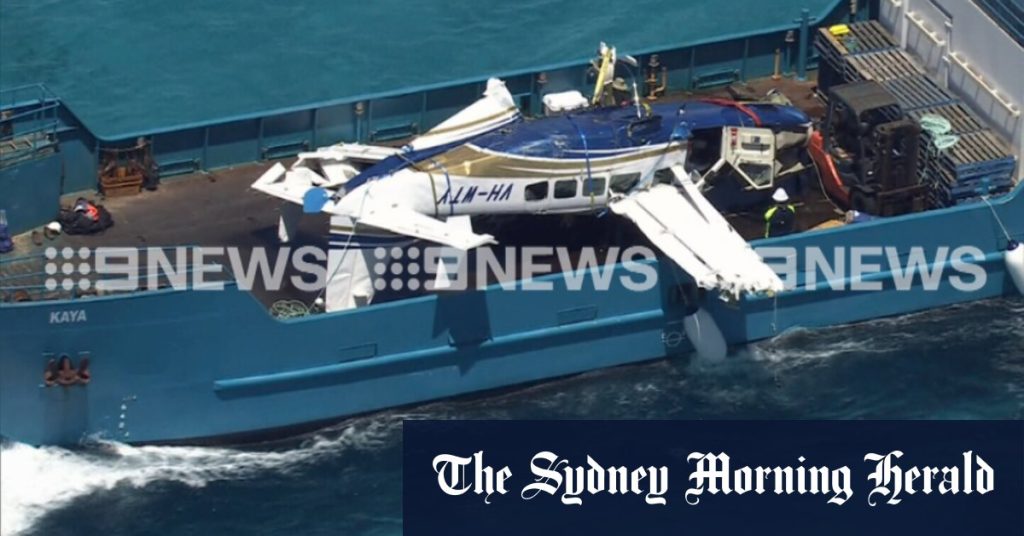The Australian Transport Safety Bureau (ATSB) successfully retrieved the wreckage of the Cessna seaplane that tragically crashed off Rottnest Island, Western Australia. Divers meticulously secured straps to the submerged aircraft, enabling a crane to carefully lift it onto a barge for transport to Perth. This delicate operation prioritized minimizing further damage to the plane while also ensuring the timely retrieval of crucial components, such as potential recording devices and mobile phones, before they deteriorated in the saltwater environment. The ATSB emphasized the importance of preserving these items for analysis at their Canberra laboratory, as they could hold vital clues to understanding the cause of the crash. Furthermore, divers exercised caution to avoid disturbing the surrounding marine environment, given the presence of fuel and hydraulic oils onboard the wreckage.
The recovery of the wreckage marks a crucial step in the ongoing investigation. The ATSB, along with the police, will conduct a thorough examination of the plane in Perth. Investigators are particularly interested in retrieving any electronic devices from within the cabin, hoping to recover data that might shed light on the events leading up to the crash. The quick retrieval of these items is deemed essential to prevent data loss due to water damage. This meticulous process involves securing and preserving any potential sources of information, including engine recording devices, in order to reconstruct the flight’s final moments and determine the factors that contributed to the tragedy.
While the investigation continues, the future of seaplane operations off Rottnest Island hangs in the balance. Western Australian Premier Roger Cook stated that the state government has not yet received any recommendations to suspend such operations pending the outcome of the investigation. He noted, however, that Swan River Seaplanes, the operator of the crashed aircraft, has voluntarily suspended all services out of respect for the victims and their families. The Premier acknowledged the potential need for future consideration of seaplane operations, particularly in light of the accident, but emphasized that any such decisions would be made based on the ATSB’s findings.
Premier Cook also highlighted the broader issue of aviation oversight, particularly in remote areas like Rottnest Island. He expressed concern about the limited supervision of uncontrolled landing strips, which rely heavily on the diligence of individual companies and pilots to maintain safety standards. While acknowledging that aviation safety and regulation fall under federal jurisdiction, Cook stressed the importance of a thorough investigation to identify any systemic issues that might have contributed to the accident. He anticipates that the Coroner will conduct a formal inquiry into the incident, given the significant public safety concerns it has raised.
The tragic crash claimed the life of one passenger, while four others survived. Two of the survivors, a West Australian woman and a Danish national, remain hospitalized in stable condition. Tragically, the Danish woman lost her partner in the crash. The incident has deeply affected the community and prompted discussions about safety protocols and oversight within the aviation industry.
The focus now shifts to the detailed analysis of the recovered wreckage and the information gleaned from any retrieved devices. The ATSB’s investigation will aim to determine the cause of the crash and offer recommendations to prevent similar tragedies in the future. This process will likely involve a comprehensive review of maintenance records, pilot training, weather conditions, and any other relevant factors. The findings will be crucial in shaping future safety regulations and operational procedures for seaplane operations, not only in Western Australia but potentially across the country. The incident serves as a stark reminder of the inherent risks associated with aviation and the importance of constant vigilance in maintaining safety standards.

